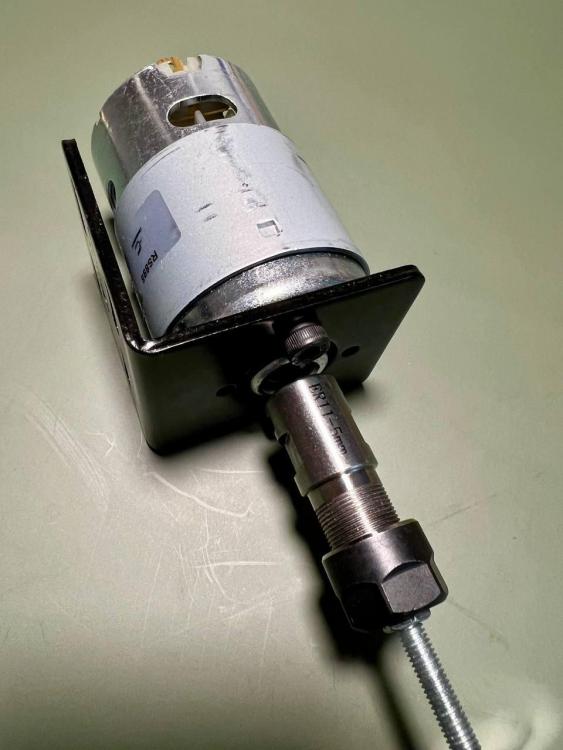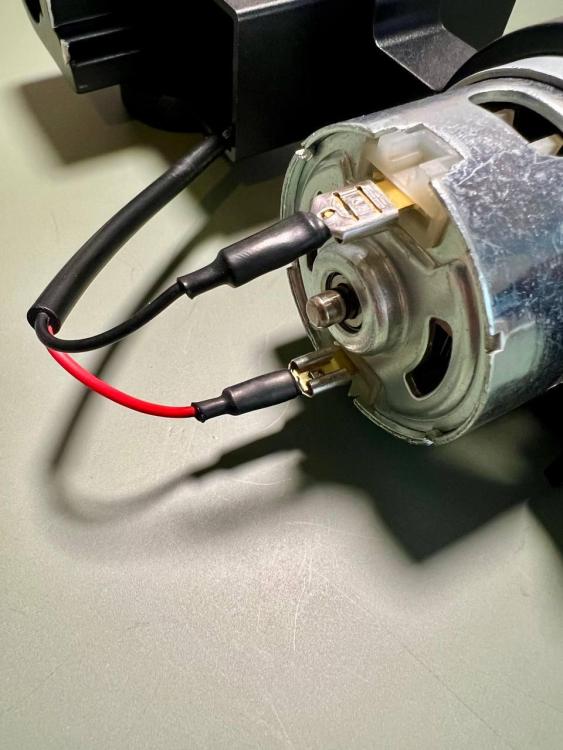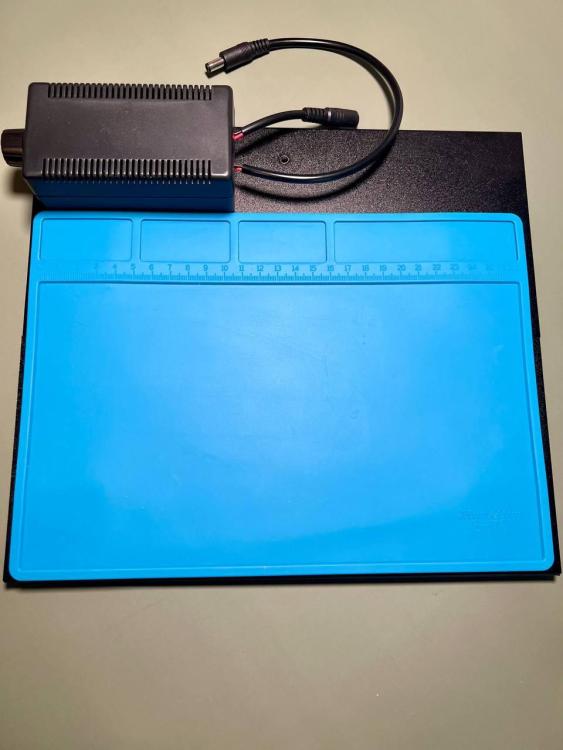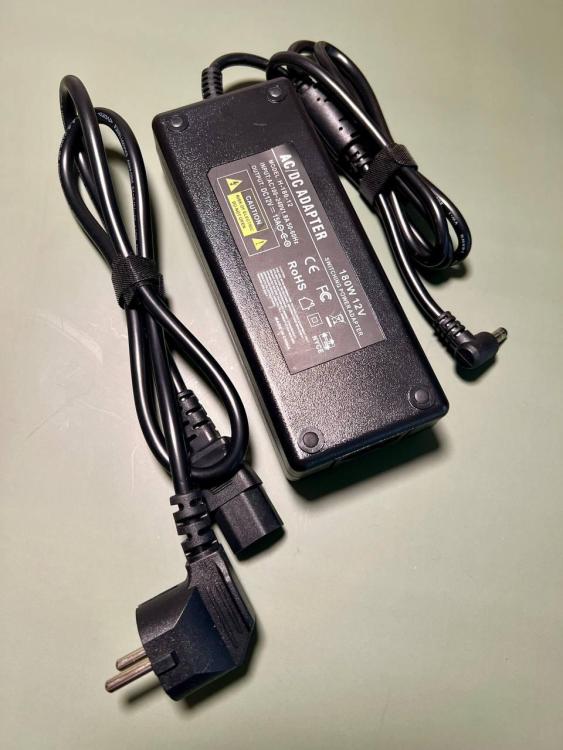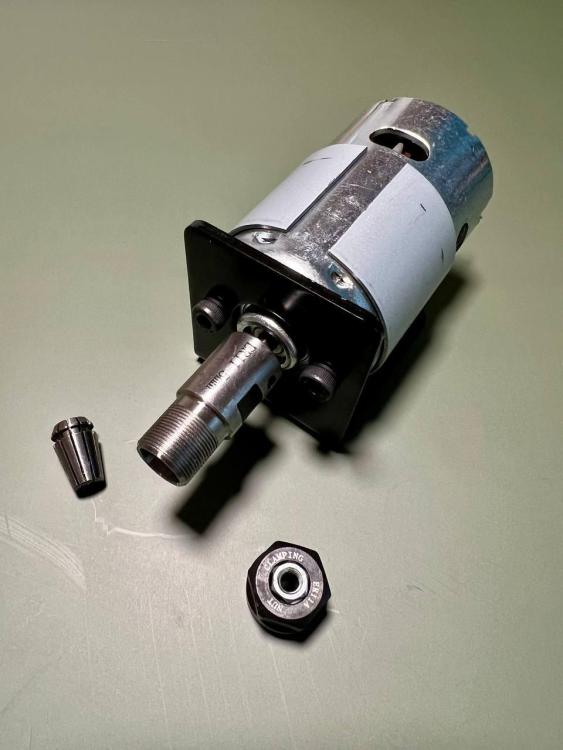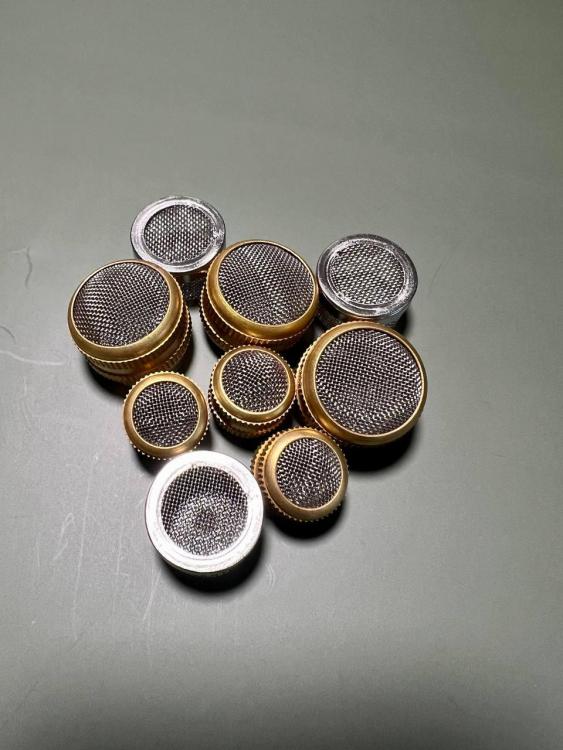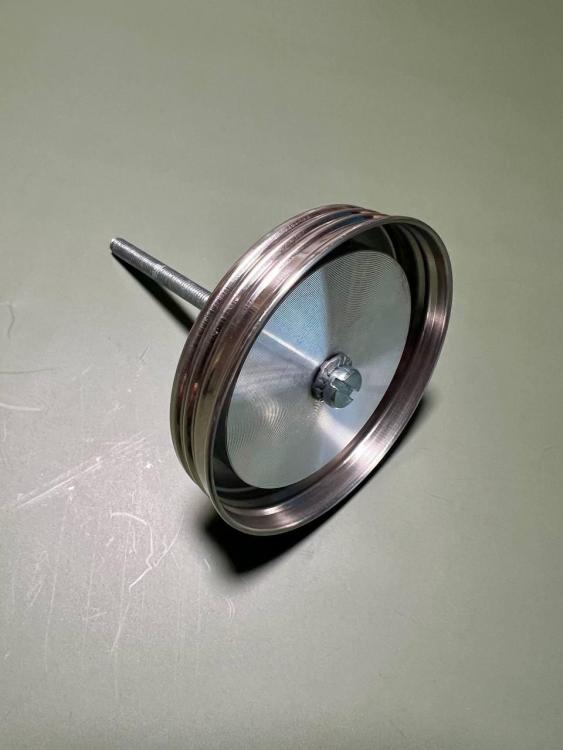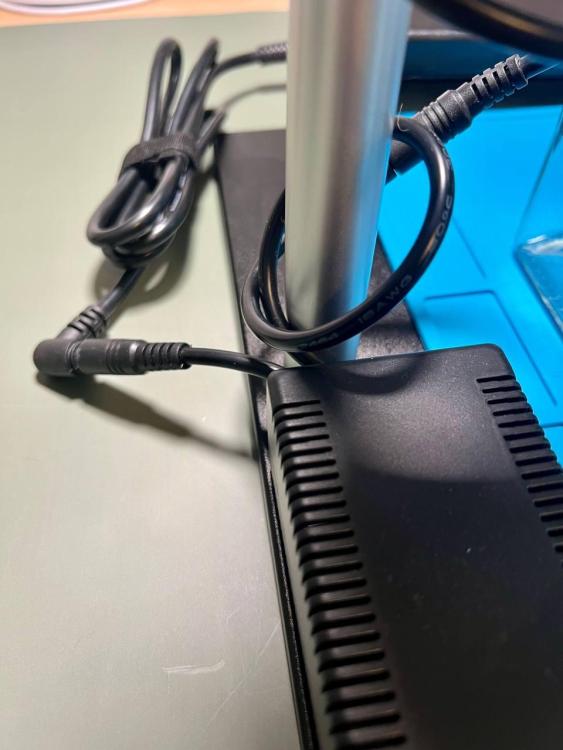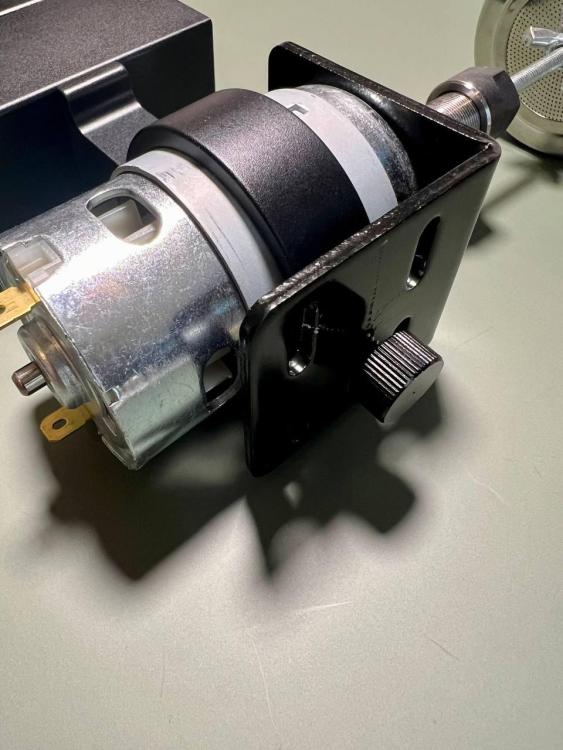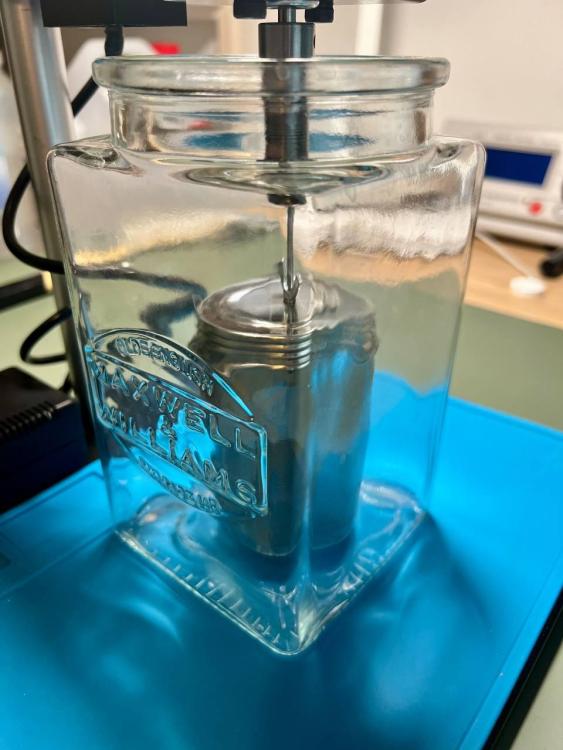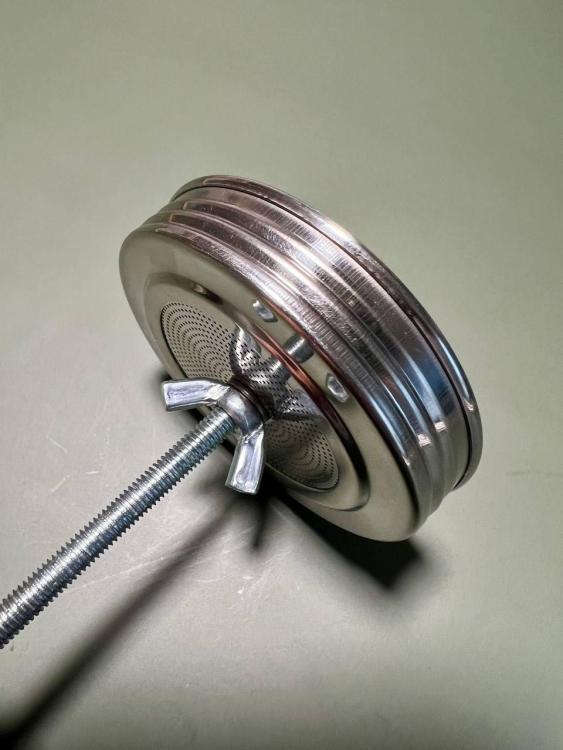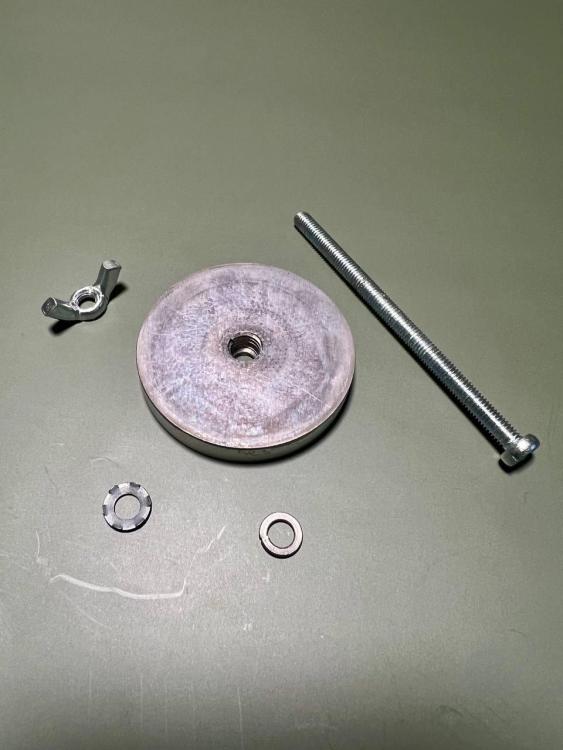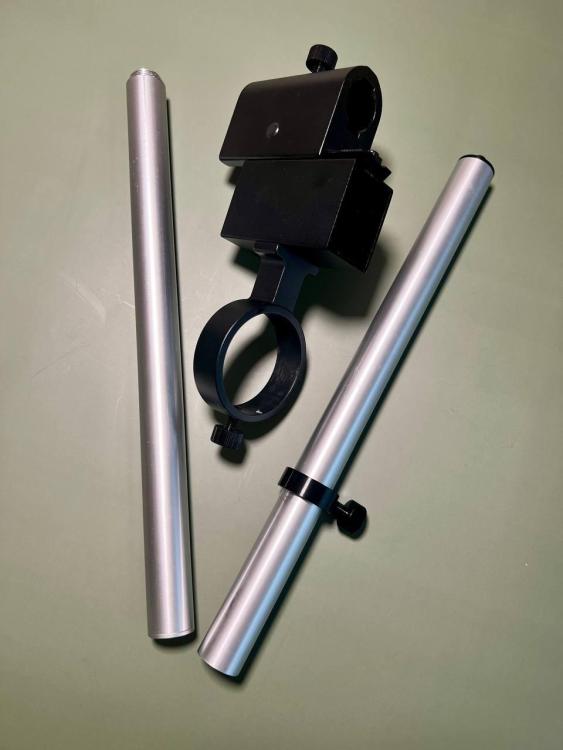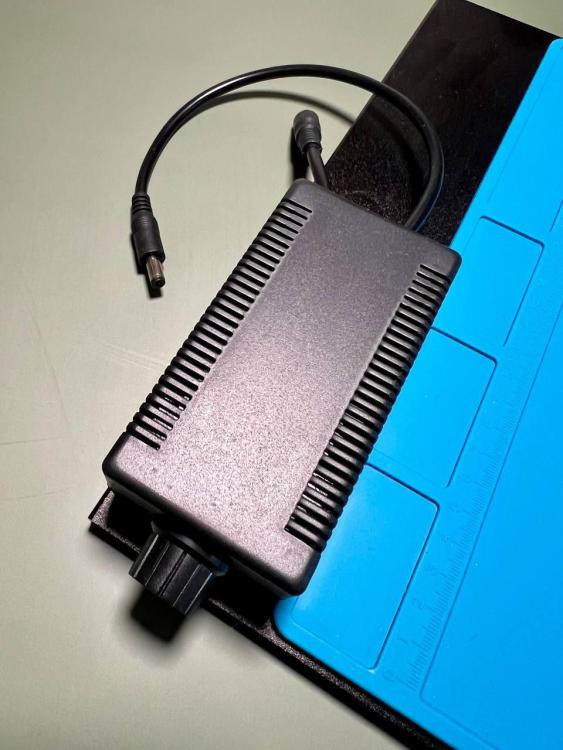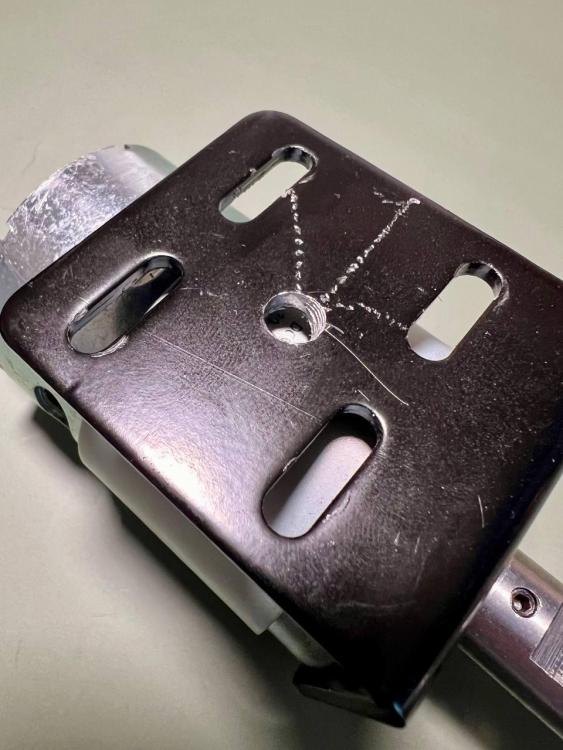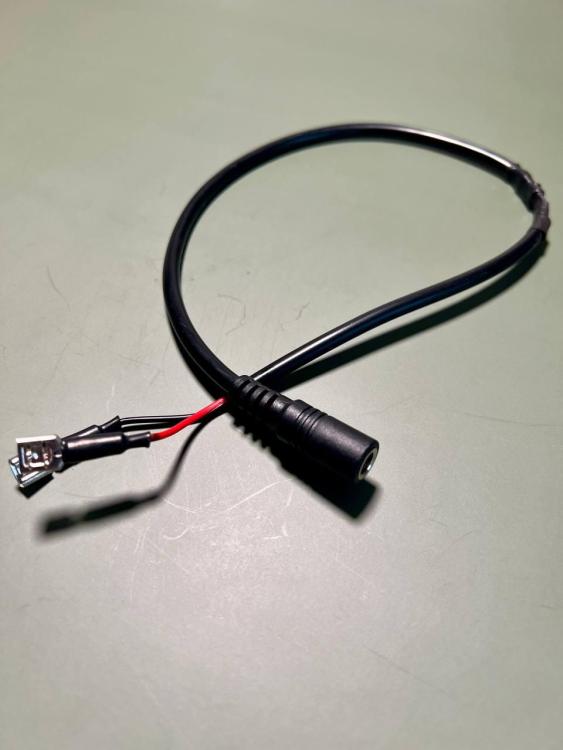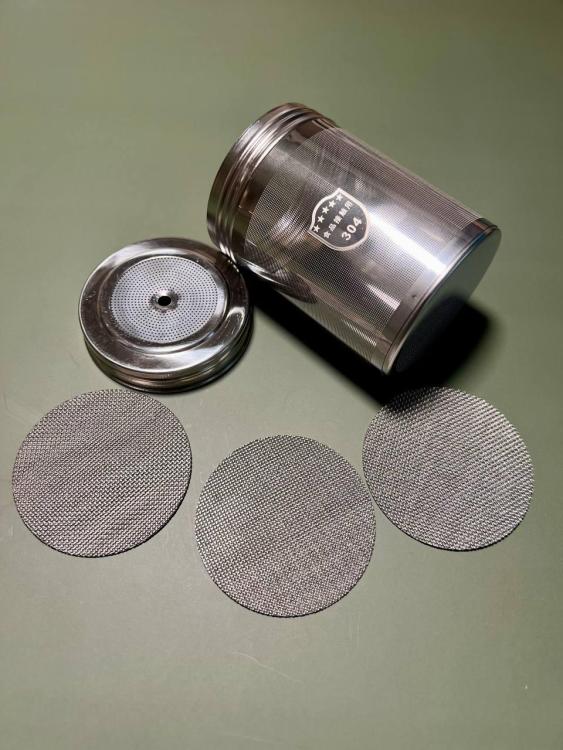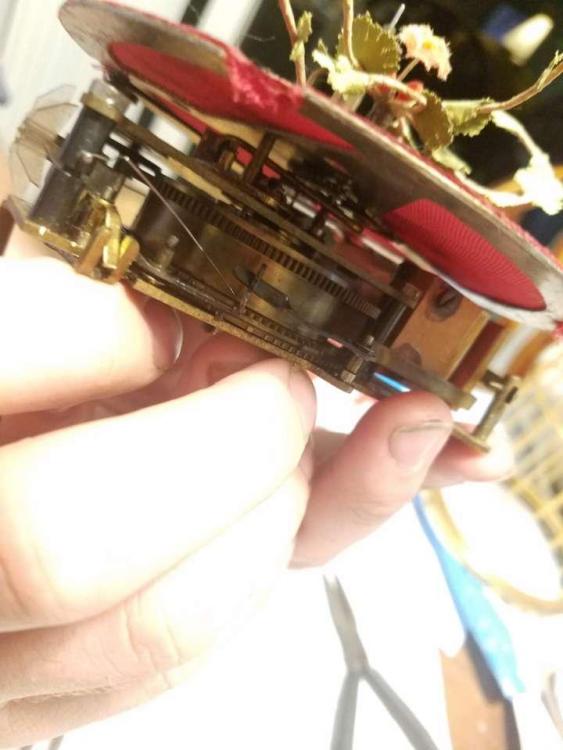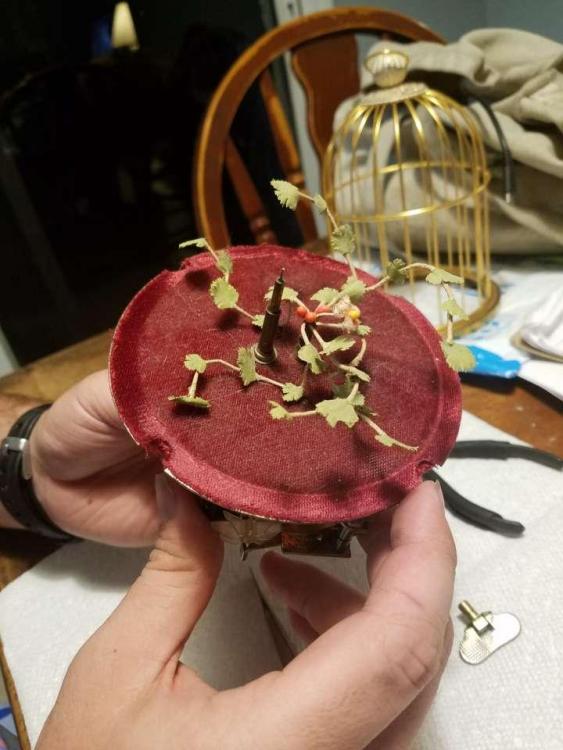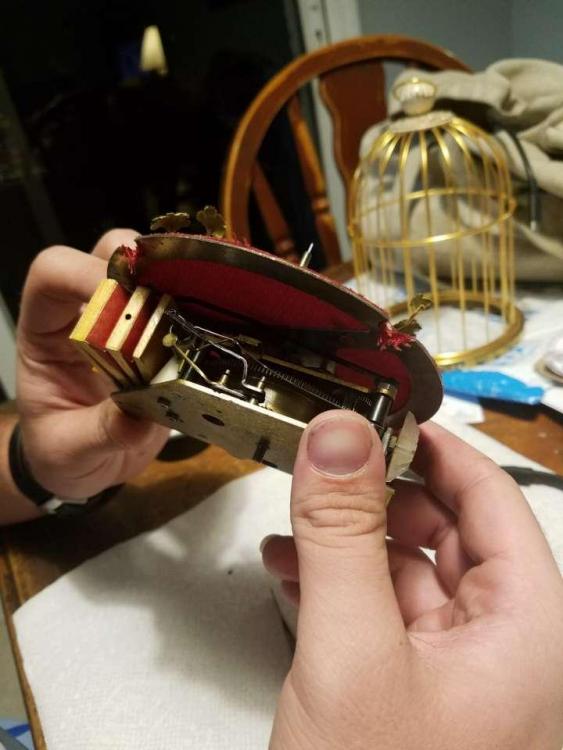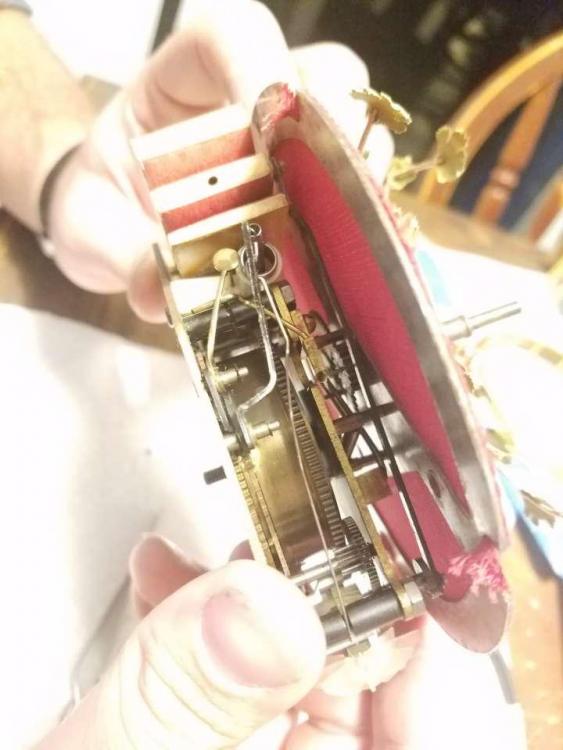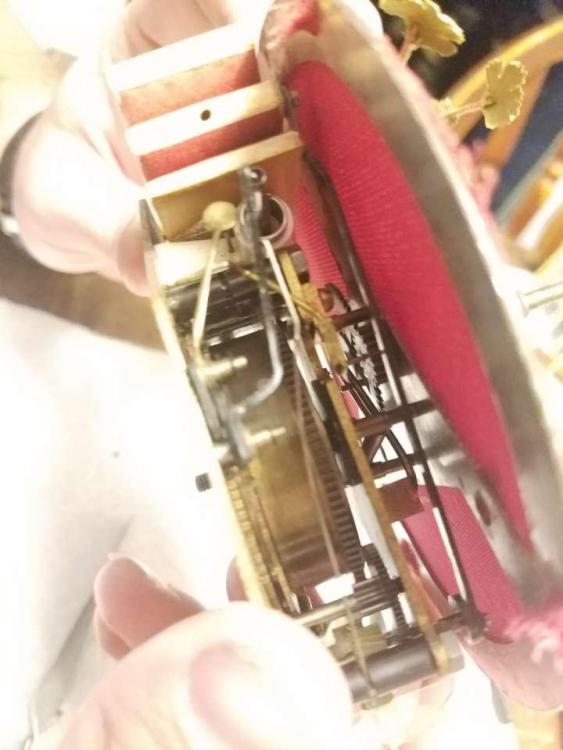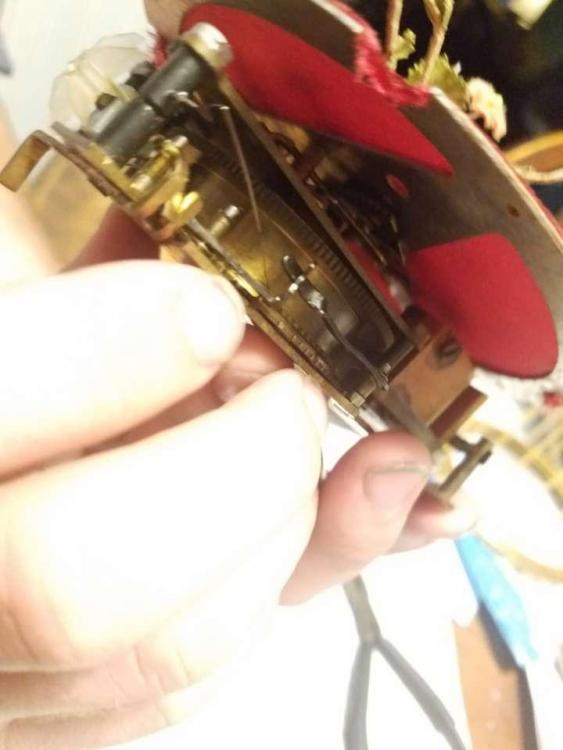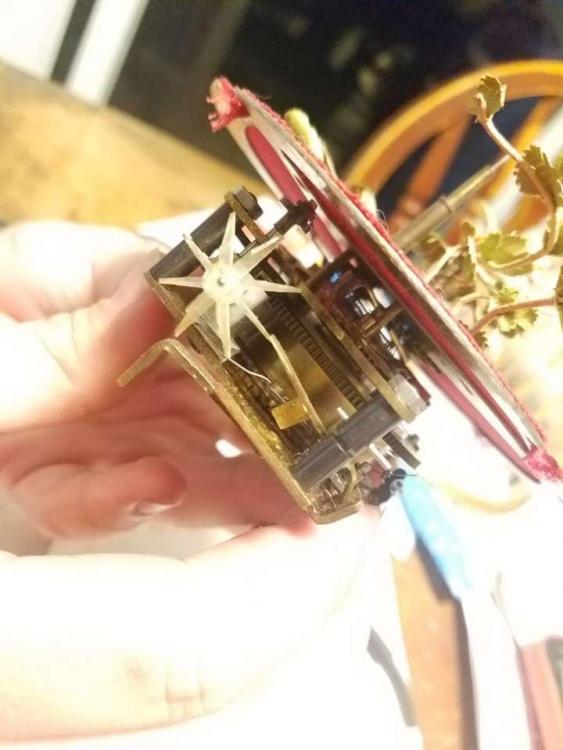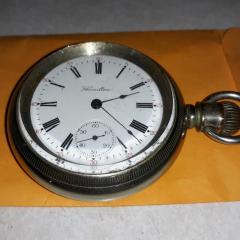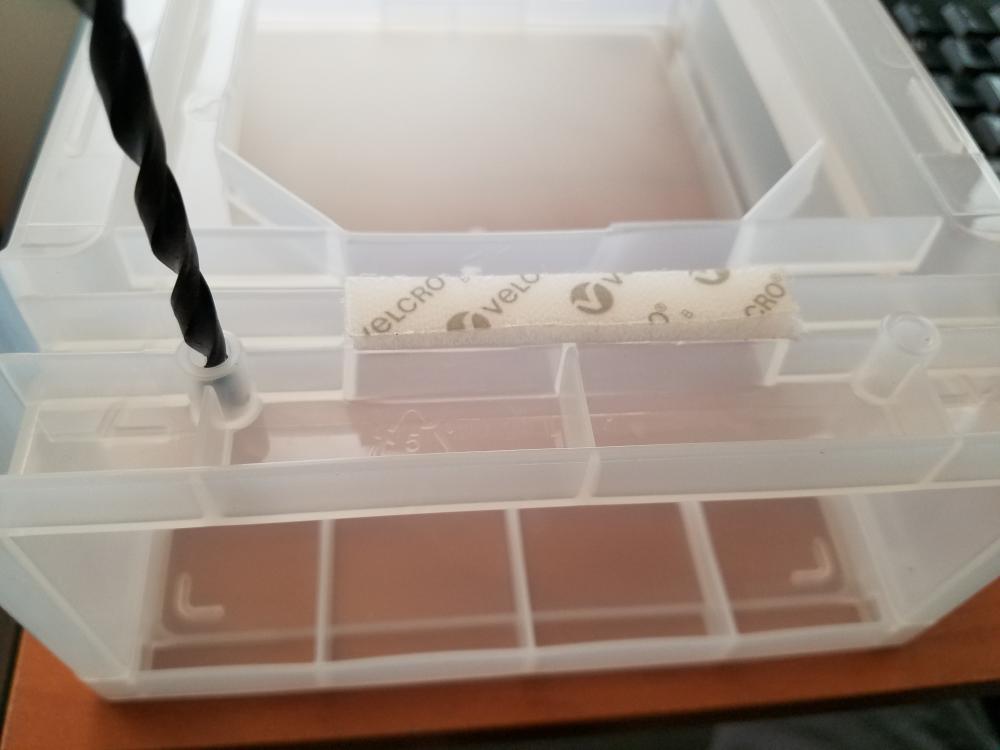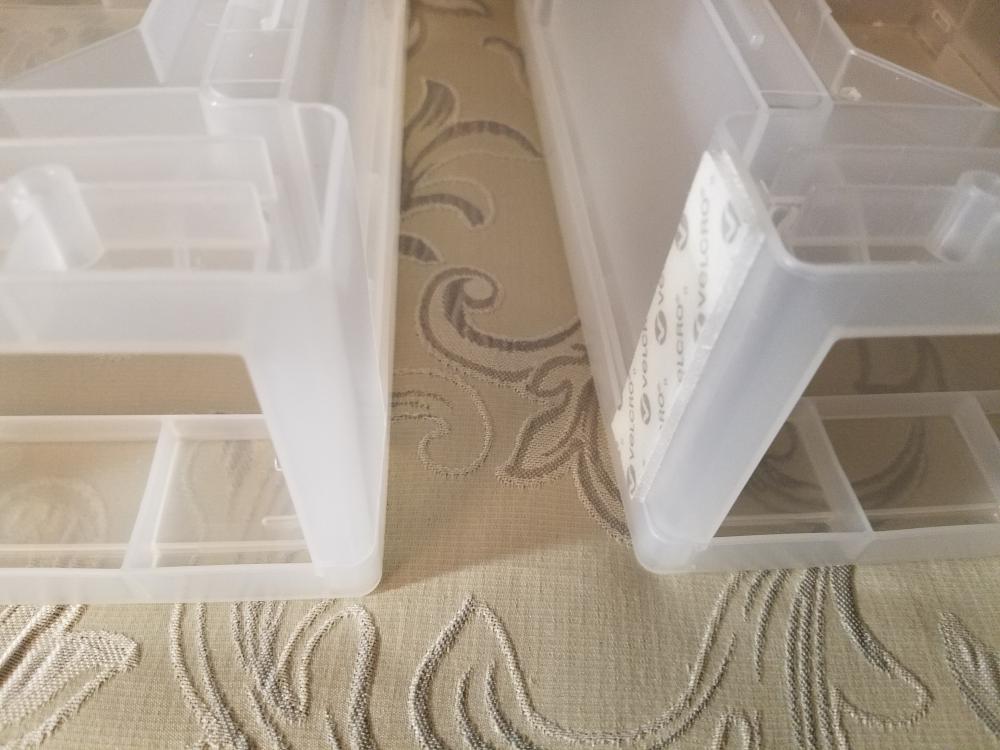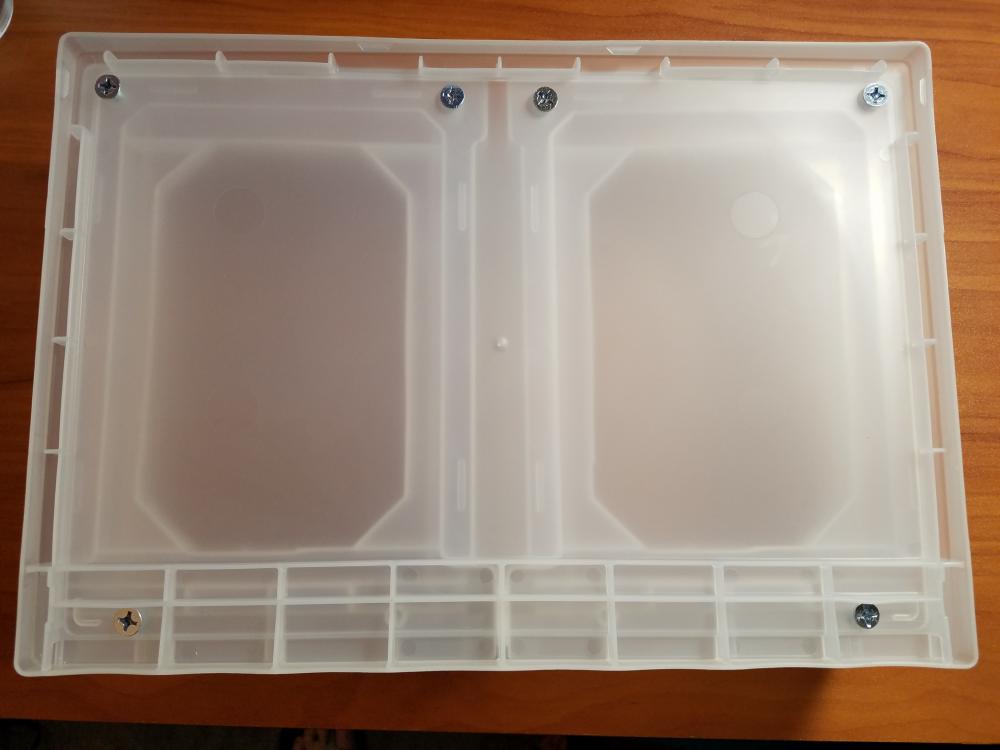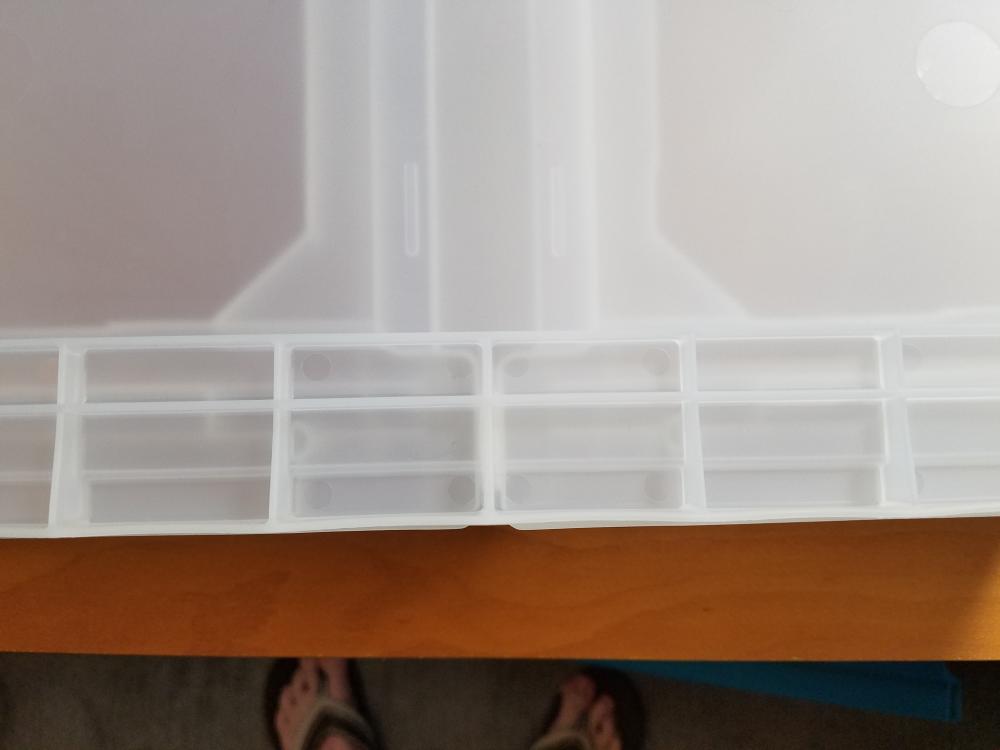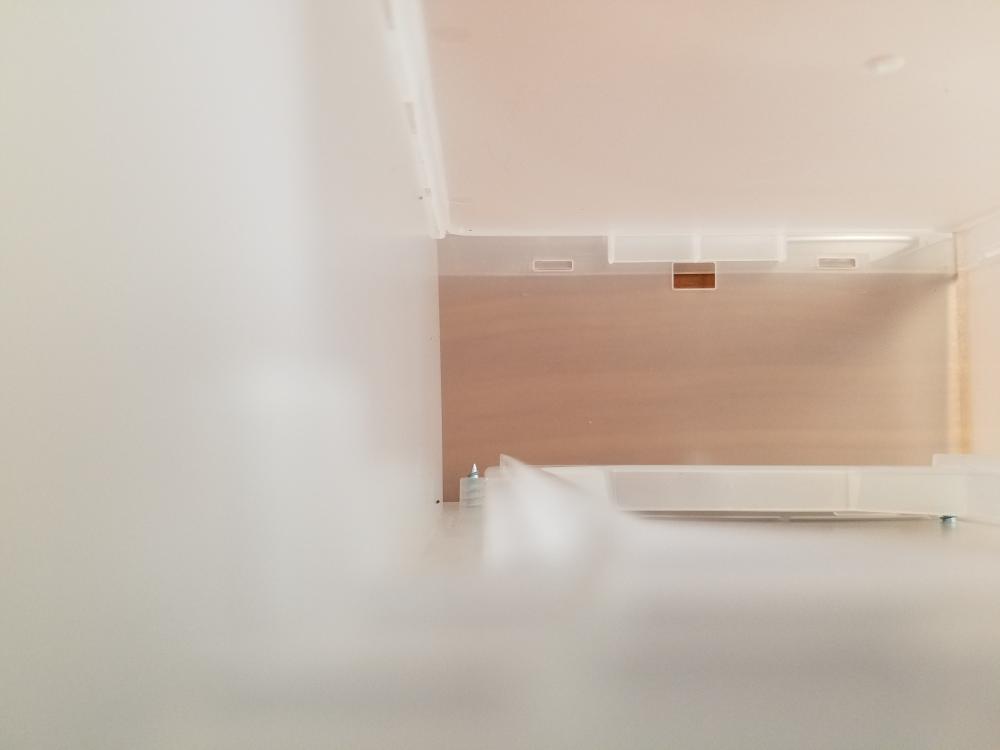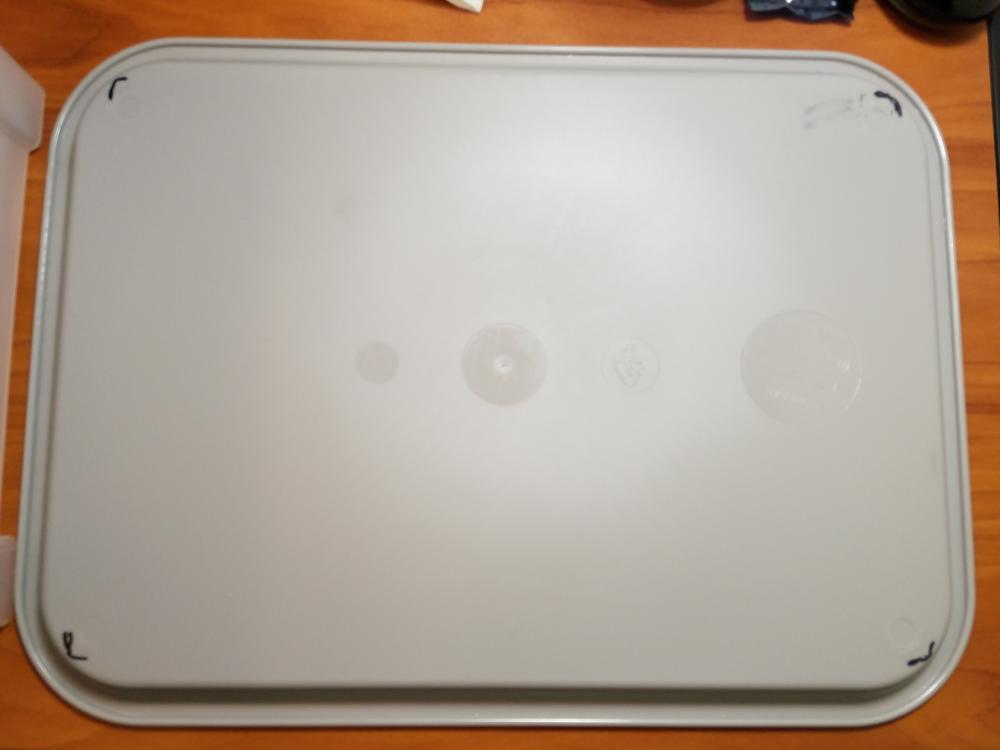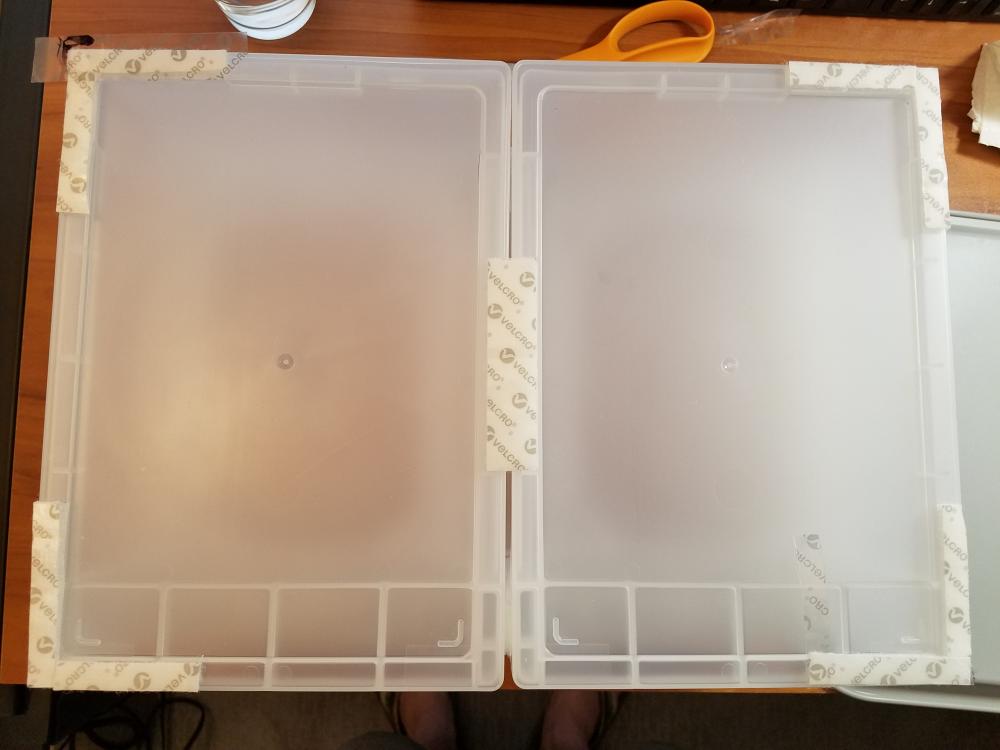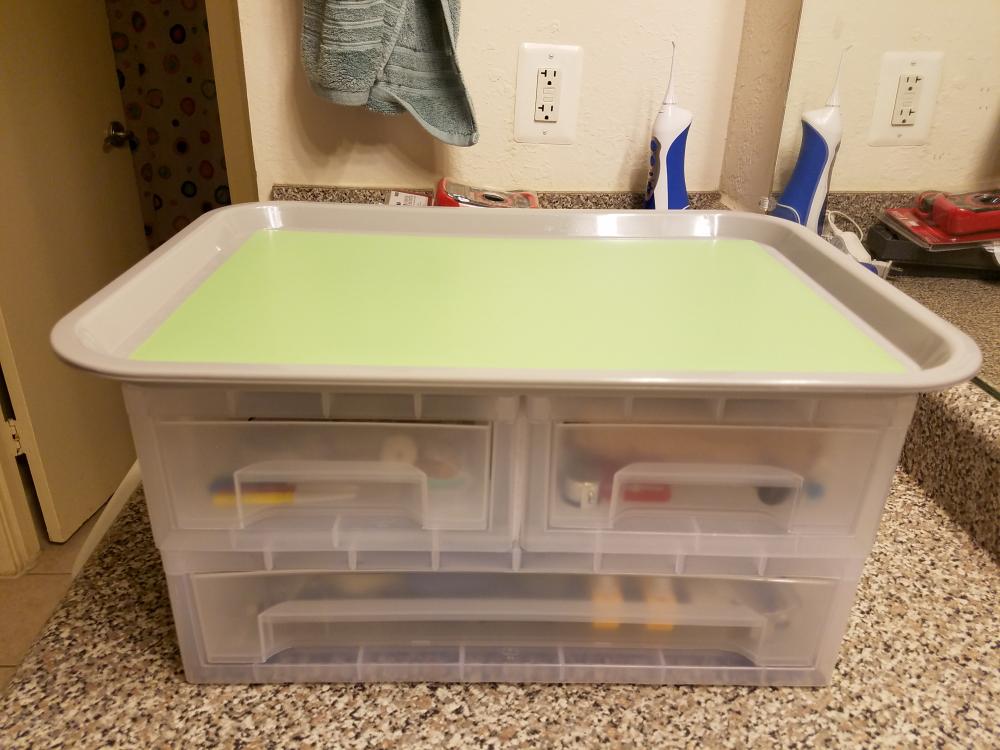Search the Community
Showing results for tags 'diy'.
-
Hi everyone! Here you can find an idea on how to build your own cleaning machine for less than 150$ using some stuff from Aliexpress (or Amazon). First - the video: Second - the stuff (all the wire connections were made w/o soldering - only crimping terminals were used; also 3 additional holes were drilled): Hope it will be helpfull to someone.
-
Good (insert time here) everyone! I am relatively new to the world of clockwork repair and maintenence, but have done delicate metalwork, mechanism cleaning, and enjoy fixing things. Just recently, my sister brought home her boyfriends late great grandmothers singing bird in cage automata. For those of you who dont completely know or understand what it is, its basically a spring driven mechanism using bellows and a variable organ pipe to make bird sounds and move a little birdie around and "sing" (Example of singing bird mechanism working). His aunt wants it to be operational again, and after opening it up (not yet taking much apart) I have come to the conclusion that it could just use a good cleaning and oiling. But, my question is, what kind of oil should I use and how should I apply it? I don't have any fancy oils except for a bottle of valve oil for my trumpet at my current disposal, but I would like to buy some decent clockwork oil for this project and a sankyo music box repair I have waiting. Note: come to find out while writing this, it was made by eschle reuge I'm Germany, probably around the 50's or 40's.
-
hi y'all-newbie here and I'm sure everybody knows that buying tools for watch repair and/or mods can be expensive if you don't want some of the plentiful cheaper stuff that's out there. That would be me because I'll be turning my hobby into some sort of income soon, when I retire, and I've already spent a small fortune(for me!) on tooling. I surf all over the 'Net looking for the cheapest price; new or used, estate sales, you name it. My questions are, are there blueprints out there for some of this stuff? has anyone made their own tooling? I'm also a machinist and I'd definitely attempt to make my own, and share with everybody. Can this be done? anyone attempted it?
-
Currently having limited space to work on watches, I decided that a portable desktop workbench would be necessary for me. I was inspired by this blog post for a similar sort of DIY setup, but was having trouble finding good sources for the individual components. Instead I used the following parts (mostly ordered from Amazon but available at Home Depot and Target as well): Carlisle CT121623 Café Standard Cafeteria / Fast Food Tray, 12" x 16", Gray 1x IRIS Desktop Letter Size Medium Stacking Drawer model DTD-L (available in clear or black) 2x IRIS Desktop Small Stacking Drawer model DTD-S (available in clear or black) Velcro 90087 Sticky-Back Hook & Loop Fastener Tape with Dispenser, 3/4" x 5ft Roll, White Everbilt #12 x 3/4in flat head phillips wood screws (SKU 284 773; from Home Depot) I paid about $32 for all of the above. Interestingly, everything except for the wood screws was made in USA. The plastic drawers do come with clips that allow them to be attached together, but the connection seemed pretty weak (hence the wood screws). To construct, I drilled through all of the holes on the bottom of the small drawers where the rubber feet would be pressed in (and ultimately ended up removing the Velcro you see in the picture below because I went with the screws instead): Next, I applied a bit of Velcro between the front edge of the two small containers. This may or may not have been necessary with the screws, but I did it anyway! To attach the two small containers to the larger drawer, I removed the top panel of the latter, marked where all of the feet align, and drilled some more holes so I wouldn't crack the plastic by driving the screws through it. You'll see where the two front inner holes interfered with molded plastic, so I didn't use screws there (also why I used the Velcro in the picture above). The screws may poke through the holes somewhat, but they shouldn't interfere with the drawers. Next I used a utility knife to shave the low feet off the bottom of the tray to make it smooth, then marked where it would be centered on the top of the small drawers. And in case you had been wondering, I chose to use the tray because it was cheap and had a decent lip around the edge to prevent things from rolling off. I then cut some lengths of Velcro in half and applied them to the topside of the small drawers. When I first ordered the Velcro, I hadn't planned on screwing it all together. The idea was to make it disassemble-able, but I changed my mind. Alternately, the Velcro could be replaced with double-sided 3M foam tape (though that wouldn't be thick enough to bridge the front gap between the two small drawers in the second picture. And now the final product, all stocked up! Esslinger's Watchmaker's Anti-Static Bench Mat Work Pad fit pretty darn well on the tray, with a little extra space around the edge to set things that might roll otherwise. The drawers have no locking mechanism, so make sure they don't slide open during transport. They do have some tabs to prevent them from falling all the way out, but that probably won't help much by that point. Final height is 7 13/16". The tray itself is textured, so a vacuum-clamp vise like the one in the blog post would likely not work. Hopefully folks find this useful. If you want, you could always stack more drawers. I find this size to be work pretty well and easy enough to store in the closet. Kevin
-
So ive been wanting to build my own watch for a while after having worked on my own watches for quite some time. The only apprehension i have is how does one size a dial to fit a case. Lets say i have a miyota 8215 a 41 mm cade that fits that movement would a 31 mm dial fit that case? I guess my question is how does one tell if a dial will fit a case. I understand all cases are different
-
Here is how one guy did it:
-
- diy
- 3d printing
-
(and 1 more)
Tagged with:


